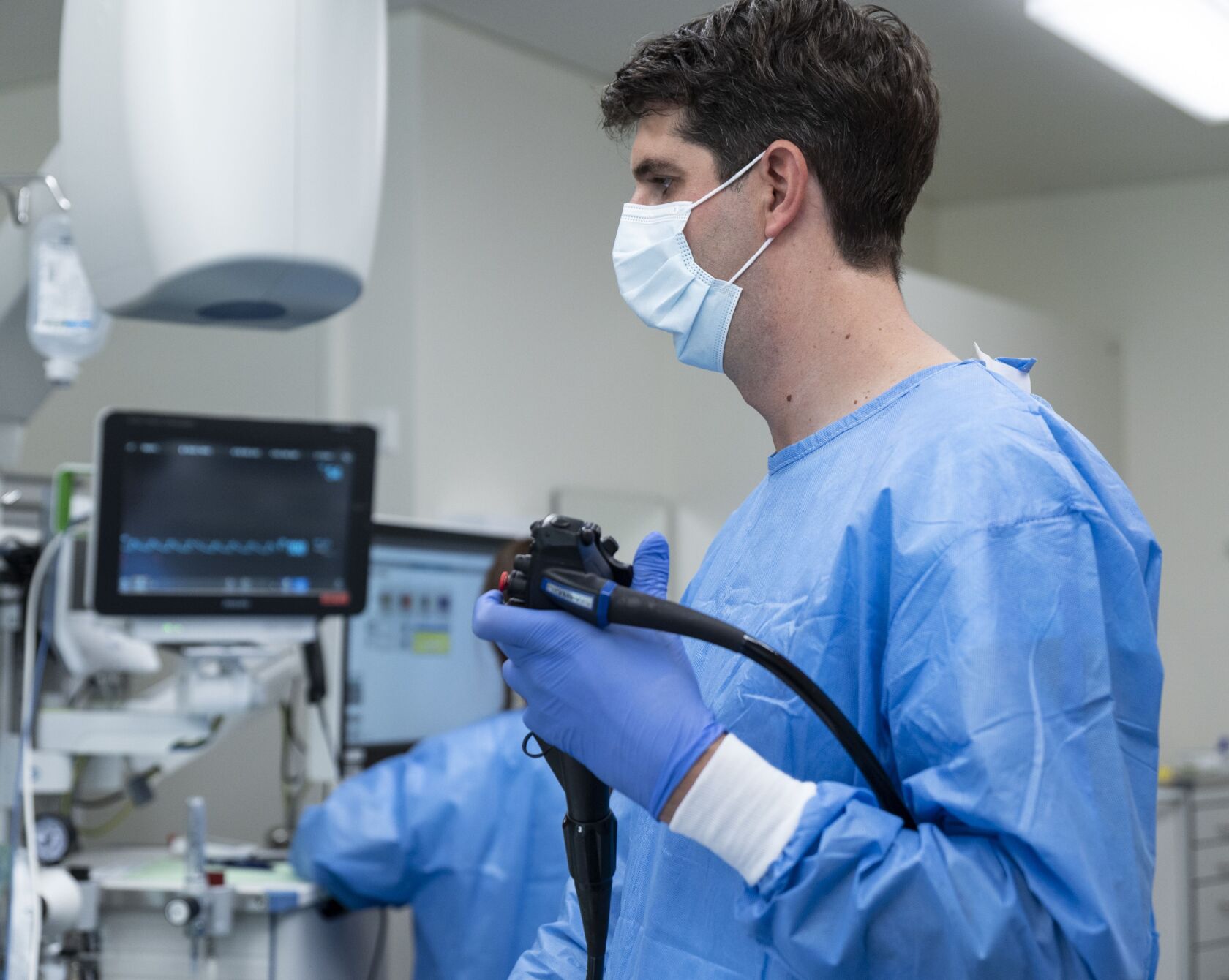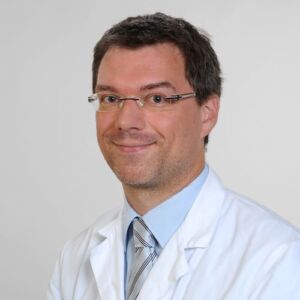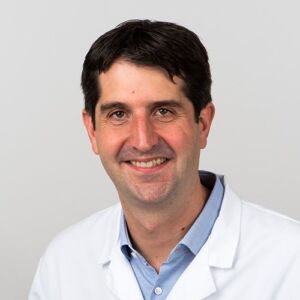A balanced diet and sufficient exercise keep the digestive organ fit. Screening can massively reduce the risk of colorectal cancer.
Text: Helga Kessler
It is a strange organ: a five to six meter long thin tube with many folds and villi is followed by an approximately one meter long, thicker section. A muscle seals the whole thing gas-tight. At first glance, the site of digestion seems very simple, but it is extremely complex: In the intestine, not only are nutrients broken down and absorbed, but pathogens are also warded off, hormones are secreted, and enzymes and vitamins are produced. “If everything functions smoothly, the intestine is healthy,” says lead physician Michael Scharl of the Department of Gastroenterology and Hepatology. For the intestine to remain healthy, the intestinal mucosa, which covers an estimated 40 square meters, and the microbiome, which consists of trillions of bacteria, must interact perfectly.
Training for the immune system
The mucous membrane is both a barrier and a place of exchange: on the one hand, it prevents microorganisms from spreading throughout the body; on the other hand, it is in contact with them, thus training the immune system. “The more different types of bacteria it has, the better,” Michael Scharl knows. In the small intestine, the mucosa secretes digestive enzymes and absorbs nutrients; in the large intestine, it recovers water. Glandular cells produce the mucus that allows food pulp and stool to slide easily. Blood vessels under the mucosa, together with lymphatic vessels, transport digested nutrients away. Millions of nerve cells regulate the activity of the intestinal muscles, control blood flow and the release of hormones, largely independently of the brain.
If the nerve regulation in the intestine is disturbed, this becomes noticeable in the form of abdominal pain, for example in irritable bowel syndrome. Physical well-being is closely linked to the bacterial colonization in the intestine. Around two kilograms of microorganisms are found mainly in the large intestine. As a quasi quid pro quo for accommodation, bacteria of the intestinal microbiome contribute, for example, to the synthesis of the happiness hormone serotonin or the sleep hormone melatonin, as well as to the synthesis of vitamins E, B12 and folic acid. Intestinal bacteria are involved in the synthesis of bile acids, and they break down dietary fiber that humans could not otherwise absorb. They produce short-chain fatty acids from cellulose – these in turn serve as food for the very bacteria that eliminate pathogens and protect against inflammation.


